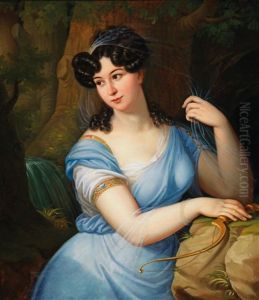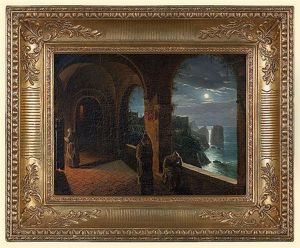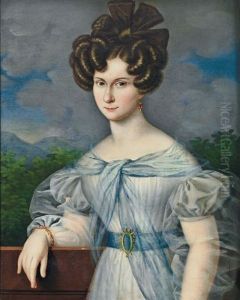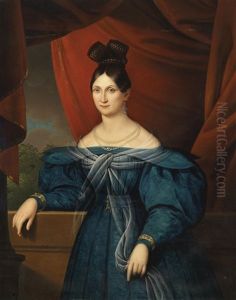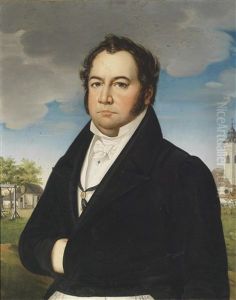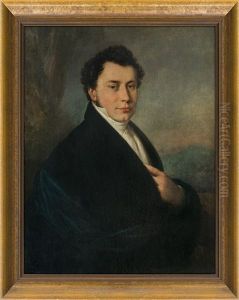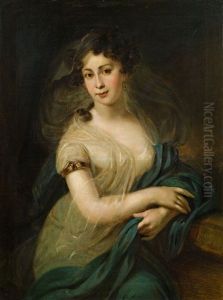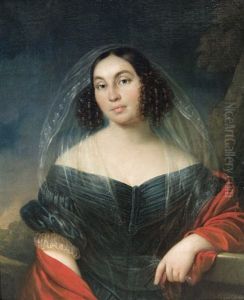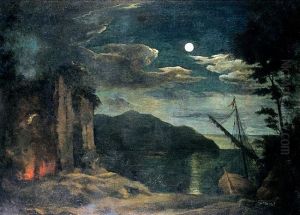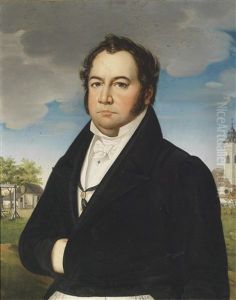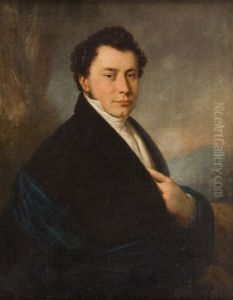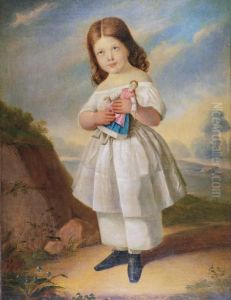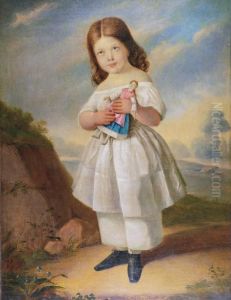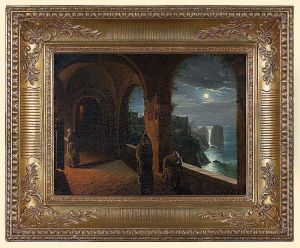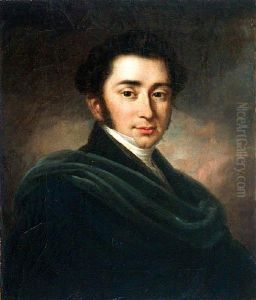Franciszek Lampi Paintings
Franciszek Lampi, born on February 24, 1782, in Romeno, then part of the Habsburg Monarchy (now Italy), was a prominent Polish painter known for his mastery in portrait and historical painting. He was a representative of the Neoclassical style, which was prevalent in European art during his time. Lampi's artistic journey began under the tutelage of his father, Jan Kanty Lampi, who was also an accomplished artist. This early exposure to art laid the foundation for his future career and influenced his stylistic development.
In the early years of his career, Lampi traveled extensively across Europe, studying and working in major art centers such as Vienna, where he gained significant recognition for his work. He became particularly noted for his skill in capturing the likeness and character of his subjects, making him a sought-after portraitist among the aristocracy and intellectual elite. Lampi's portraits are characterized by their refined elegance, meticulous detail, and the subtle play of light and shadow, which imbue his subjects with a sense of vitality and presence.
Beyond portraits, Lampi also explored historical and mythological themes, creating large-scale compositions that were ambitious in both scope and execution. His historical paintings often reflected the political and social climate of his times, serving as a commentary on the events and figures that shaped the course of European history.
In 1823, Lampi settled in Kraków, Poland, where he became a pivotal figure in the artistic life of the city. He was instrumental in the establishment of the Kraków School of Fine Arts, where he served as a professor and mentor to a new generation of Polish artists. Through his teaching and his art, Lampi played a key role in the revival of Polish cultural identity, which was under threat due to the political partitions of Poland.
Franciszek Lampi's legacy is preserved in his extensive body of work, which remains highly regarded for its artistic merit and historical significance. He passed away on December 4, 1852, in Kraków, leaving behind a rich legacy that continues to inspire and captivate audiences. His paintings are held in numerous collections and museums across Poland and Europe, testament to his enduring influence on the art world.
